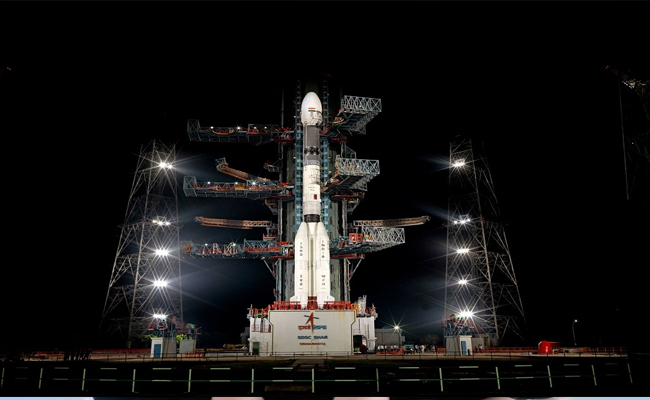ISRO commences countdown for the launch of its navigation satellite
By MYBRANDBOOK

On 28th May, Indian Space Research Organisation (ISRO) scientists started the 27.5 hour countdown for the launch of a navigation satellite on board a GSLV rocket here on May 29.
ISRO is all set to launch the second-generation navigation satellite series. It is a very important launch which would ensure the continuity of NavIC (Navigation with Indian Constellation) services -- an Indian regional satellite navigation system, similar to GPS, providing accurate and real-time navigation in India and a region extending to 1,500 km around the mainland.
In order to provide accurate user position to better than 20-metres and timing accuracy better than 50 nanoseconds, the NavIC signals are designed.
The 51.7 metre tall Geosynchronous Satellite Launch Vehicle, on its 15th flight, would carry the navigation satellite NVS-01 weighing 2,232 kg on Monday at 10.42 am from the second launch pad at the Satish Dhawan Space Centre (SHAR) here, about 130 km from Chennai.
The rocket is scheduled to deploy the satellite almost 20 minutes after the flight in a geosynchronous transfer orbit (GTO) at an altitude of about 251 km, ISRO said.
The NVS-01 carries navigation payloads L1, L5 and S bands and in comparison with the previous one, the second-generation satellite would also carry an indigenously developed rubidium atomic clock.
It is for the first time that an indigenously developed rubidium atomic clock would be used in Monday's launch, ISRO said.
The Navigation with Indian Constellation (NavIC) system has been built by ISRO so that it can meet the positioning, navigation and timing requirements of the country, particularly with regard to civil aviation and military requirements. NavIC was earlier known as the Indian Regional Navigation Satellite System (IRNSS).
"The L1 navigation band is popular for providing position, navigation and timing services for civilian users and for interoperability with other GNSS (global navigation satellite system) signals," ISRO said.
Some of the applications of NavIC include terrestrial, aerial and maritime navigation, precision agriculture, location-based services in mobile devices and marine fisheries, among many others.
NavIC is designed with a constellation of seven satellites and a network of ground stations that operate 24x7. NavIC offers two services -- Standard Position Service (SPS) for civilian users and Restricted Service for strategic users.
NavIC SPS signals are interoperable with the US global navigation satellite system signals, GPS, Glonass from Russia, Galileo (European Union) and BeiDou, China.
Monday's mission is the sixth operational flight of the GSLV with indigenous cryogenic stage. The mission life of NVS-01 is expected to be better than 12 years, ISRO said.


Nazara and ONDC set to transform in-game monetization with ‘
Nazara Technologies has teamed up with the Open Network for Digital Comme...

Jio Platforms and NICSI to offer cloud services to government
In a collaborative initiative, the National Informatics Centre Services In...

BSNL awards ₹5,000 Cr Project to RVNL-Led Consortium
A syndicate led by Rail Vikas Nigam Limited (abbreviated as RVNL), along wi...

Pinterest tracks users without consent, alleges complaint
A recent complaint alleges that Pinterest, the popular image-sharing platf...


Icons Of India : AALOK KUMAR
Aalok Kumar is celebrated as a global leader and recipient of the Peop...

Icons Of India : NIKHIL RATHI
Co-founder & CEO of Web Werks, a global leader in Data Centers and Clo...

Icons Of India : Girish Mathrubootham
Girish Mathrubootham is the Founder of Freshworks (previously known ...


IREDA - Indian Renewable Energy Development Agency Limited
IREDA is a specialized financial institution in India that facilitates...

STPI - Software Technology Parks of India
STPI promotes and facilitates the growth of the IT and ITES industry i...

NSE - National Stock Exchange
NSE is the leading stock exchange in India....


Indian Tech Talent Excelling The Tech World - Shantanu Narayen, CEO- Adobe Systems Incorporated
Shantanu Narayen, CEO of Adobe Systems Incorporated, is renowned for h...

Indian Tech Talent Excelling The Tech World - PADMASREE WARRIOR, Founder, President & CEO - Fable
Padmasree Warrior, the Founder, President, and CEO of Fable, is revolu...

Indian Tech Talent Excelling The Tech World - JAY CHAUDHRY, CEO – Zscaler
Jay Chaudhry, an Indian-American technology entrepreneur, is the CEO a...